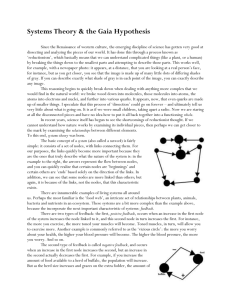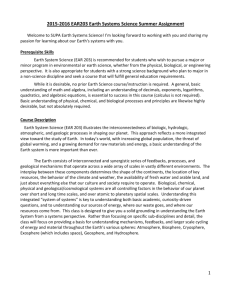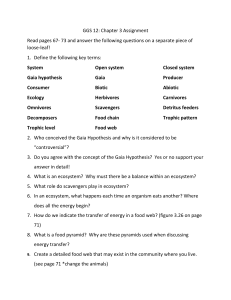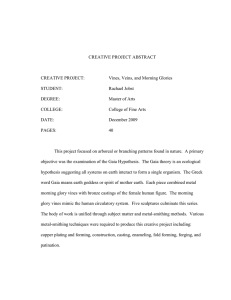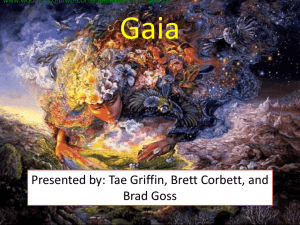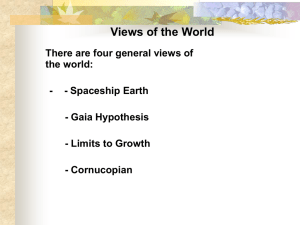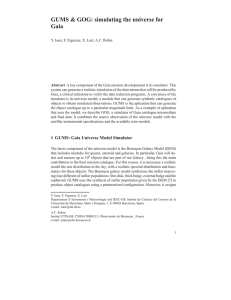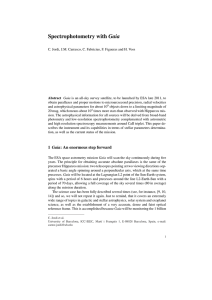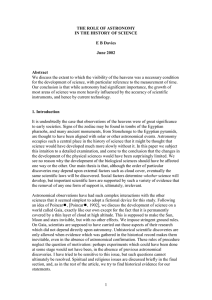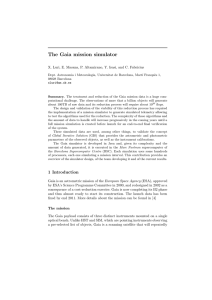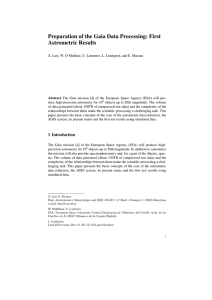Gaia Theory Basics: Summary & Key Concepts
advertisement
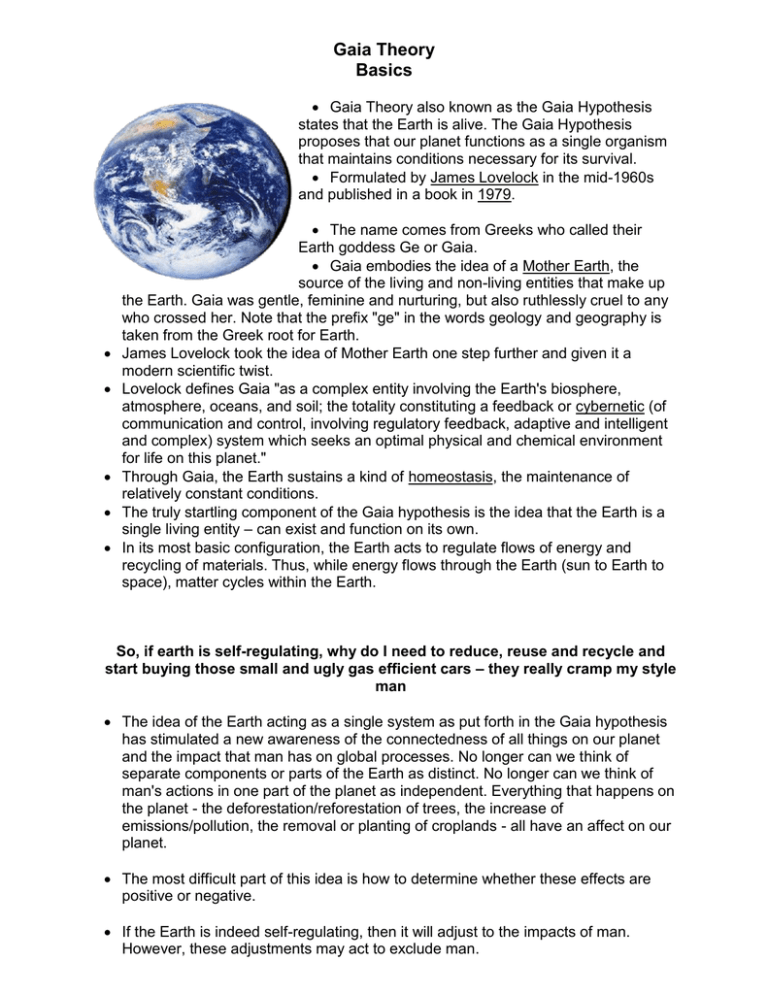
Gaia Theory Basics Gaia Theory also known as the Gaia Hypothesis states that the Earth is alive. The Gaia Hypothesis proposes that our planet functions as a single organism that maintains conditions necessary for its survival. Formulated by James Lovelock in the mid-1960s and published in a book in 1979. The name comes from Greeks who called their Earth goddess Ge or Gaia. Gaia embodies the idea of a Mother Earth, the source of the living and non-living entities that make up the Earth. Gaia was gentle, feminine and nurturing, but also ruthlessly cruel to any who crossed her. Note that the prefix "ge" in the words geology and geography is taken from the Greek root for Earth. James Lovelock took the idea of Mother Earth one step further and given it a modern scientific twist. Lovelock defines Gaia "as a complex entity involving the Earth's biosphere, atmosphere, oceans, and soil; the totality constituting a feedback or cybernetic (of communication and control, involving regulatory feedback, adaptive and intelligent and complex) system which seeks an optimal physical and chemical environment for life on this planet." Through Gaia, the Earth sustains a kind of homeostasis, the maintenance of relatively constant conditions. The truly startling component of the Gaia hypothesis is the idea that the Earth is a single living entity – can exist and function on its own. In its most basic configuration, the Earth acts to regulate flows of energy and recycling of materials. Thus, while energy flows through the Earth (sun to Earth to space), matter cycles within the Earth. So, if earth is self-regulating, why do I need to reduce, reuse and recycle and start buying those small and ugly gas efficient cars – they really cramp my style man The idea of the Earth acting as a single system as put forth in the Gaia hypothesis has stimulated a new awareness of the connectedness of all things on our planet and the impact that man has on global processes. No longer can we think of separate components or parts of the Earth as distinct. No longer can we think of man's actions in one part of the planet as independent. Everything that happens on the planet - the deforestation/reforestation of trees, the increase of emissions/pollution, the removal or planting of croplands - all have an affect on our planet. The most difficult part of this idea is how to determine whether these effects are positive or negative. If the Earth is indeed self-regulating, then it will adjust to the impacts of man. However, these adjustments may act to exclude man.
